Urban Rural
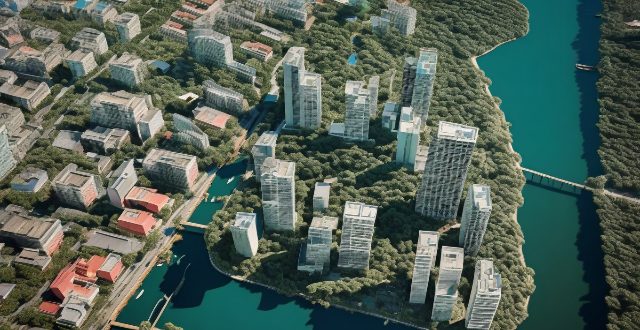
How do climate adaptation strategies differ between rural and urban areas ?
Climate adaptation strategies differ between rural and urban areas due to infrastructure, resources, community needs, and environmental impacts. Urban areas often have advanced technology and diverse stakeholders involved in adaptation planning, while rural areas rely more on local knowledge and community-based initiatives. Funding and resources are also key factors, with urban areas having better access to funding for large-scale projects and a diversified economy to support climate adaptation measures. In contrast, rural areas may have limited financial resources and dependence on agriculture, making them vulnerable to climate impacts. Community participation is crucial in both settings, but urban areas may have more platforms for participatory planning and decision-making processes, while rural areas benefit from strong community cohesion and collective action. Environmental impact considerations also vary, with urban areas facing challenges like the heat island effect and air pollution, while rural areas focus on natural resource management and watershed protection.
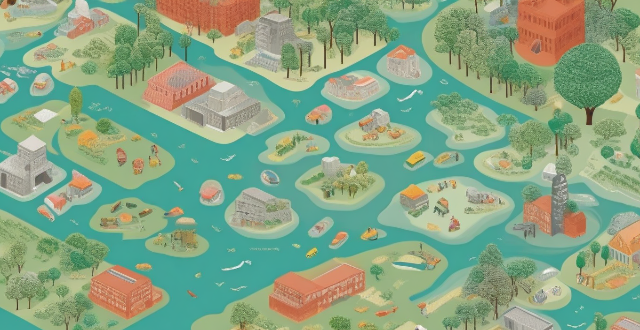
How does climate change influence the movement of people from rural to urban areas ?
Climate change significantly impacts human migration patterns, particularly the movement from rural to urban areas. This trend is influenced by direct effects like extreme weather events and changes in agricultural conditions, as well as indirect factors such as economic downturns in rural sectors and social considerations. To reduce rural-to-urban migration driven by climate change, adaptation strategies are needed to enhance resilience in rural areas through sustainable agriculture practices, infrastructure development, economic diversification, and community support programs.
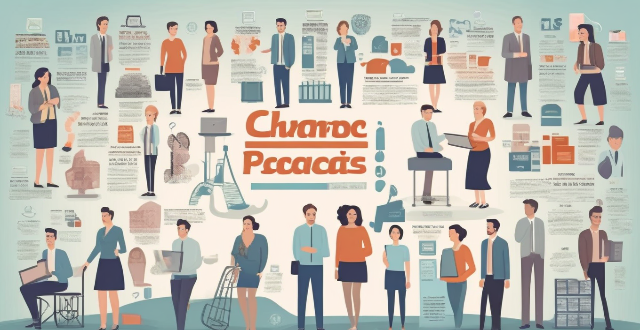
How do climate change impacts differ for men and women in urban vs. rural areas ?
Climate change impacts vary by gender and geography, with urban and rural areas presenting distinct challenges for men and women. Urban men benefit from more job opportunities and adaptation resources, while urban women face vulnerabilities during extreme events, health concerns, and economic disruption. Rural men are often dependent on natural resources for livelihoods and may migrate due to climate change, whereas rural women bear agricultural responsibilities, caregiving roles, and water collection tasks, all of which are affected by climate stressors. Key differences include resource access, infrastructure, livelihood dependencies, and gender roles, with women often bearing a disproportionate burden. Addressing climate change requires recognizing these differences and developing targeted strategies for the most vulnerable populations.
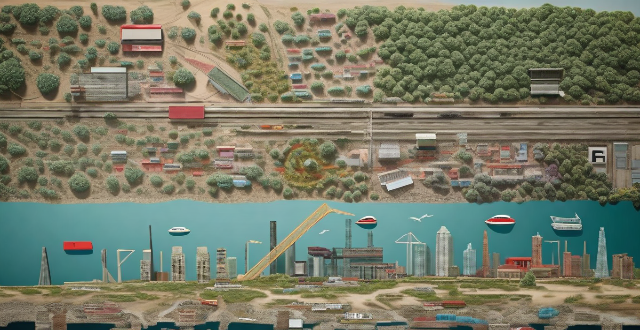
What are the challenges faced by public transportation systems in rural areas compared to urban areas ?
Public transportation systems in rural areas face unique challenges compared to those in urban areas, including limited accessibility, high costs, limited service options, and a lack of awareness and education. These challenges can make it difficult for public transportation providers to justify providing services to rural areas, resulting in limited access to these important modes of transportation for many people living in rural communities.

How can we create more opportunities for youth to participate in sports in rural areas ?
Participating in sports is crucial for a child's development, but rural youth often face challenges in accessing sports facilities and programs. To create more opportunities for youth to participate in sports in rural areas, local governments and organizations can build infrastructure, provide equipment and facilities, train coaches and volunteers, organize competitions and tournaments, and promote sports education. By addressing these issues, we can encourage more children to engage in physical activities, develop their skills, and lead healthy lifestyles.
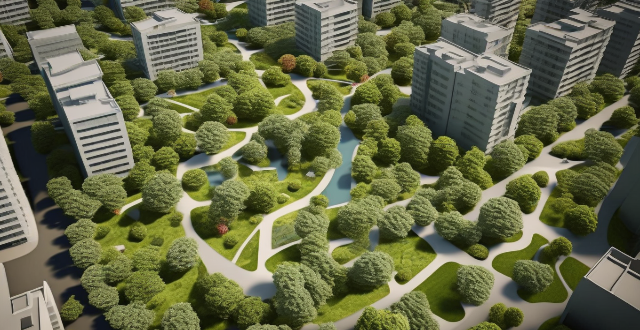
How can urban green spaces improve residents' quality of life ?
Urban green spaces, including parks and community gardens, play a key role in enhancing the quality of life for city residents by providing physical, mental, social, and environmental benefits. Physical health is improved through increased physical activity, better air quality, and mitigation of the heat island effect. Mental health benefits include stress reduction, enhanced mood, and improved cognitive function. Social well-being is boosted through community building, recreational opportunities, and educational value. Environmentally, urban green spaces contribute to biodiversity conservation, water management, and carbon sequestration. These areas are essential for comprehensive wellness in urban environments and should be a focus in future city planning.

How do urban greening projects influence city temperatures and heat islands ?
Urban greening projects, such as planting trees and creating parks, can help reduce city temperatures and mitigate the effects of urban heat islands. These projects provide shade, reduce heat absorption by buildings and roads, and promote evapotranspiration, all of which contribute to cooler city environments. By increasing vegetation in cities, urban greening initiatives can also help reduce the intensity of urban heat islands, making cities more comfortable for residents. As our world continues to urbanize, prioritizing urban greening initiatives is essential for creating healthier and more sustainable cities for future generations.

How can network coverage be improved in rural areas ?
Improving network coverage in rural areas requires a multi-faceted approach that includes infrastructure development, adoption of advanced technologies, supportive government policies, community participation, and exploration of alternative connectivity solutions. Governments can conduct surveys to assess needs, formulate supportive policies, and allocate budget for rural connectivity. Service providers should invest in R&D, collaborate with other stakeholders, and engage with rural communities to tailor solutions. Local communities should participate in planning, promote digital literacy, and monitor progress.
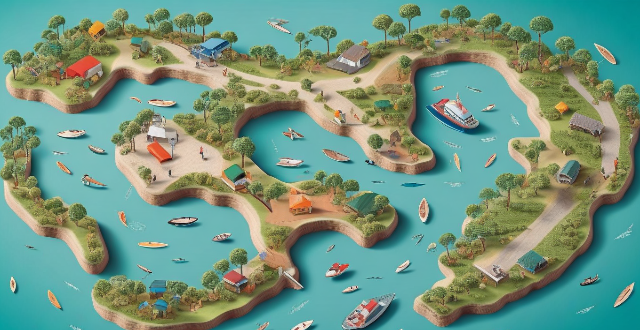
What are some successful examples of sports-based rural revitalization programs ?
Sports-based rural revitalization programs have been successful in improving economic, social, and cultural conditions of rural areas through sports activities. Examples include China's Hometown Sports Project, India's Rural Sports Development Program, Australia's Grassroots Sports Development Program, and South Africa's Rural Sports Development Project. These programs focus on developing sports infrastructure, training talent, organizing events, and promoting community engagement, contributing to sustainable development and enhancing quality of life in rural areas.
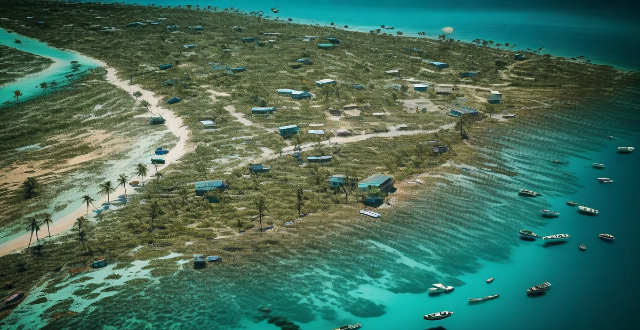
How can I get better cell phone coverage in rural areas ?
Improving cell phone coverage in rural areas can be achieved through various methods. Firstly, checking and optimizing your phone's settings can enhance reception. Secondly, signal boosters or cell phone repeaters can amplify weak signals. Thirdly, switching to a different carrier with better rural coverage might be beneficial. Fourthly, satellite phones offer unparalleled coverage in extremely remote locations. Fifthly, using public Wi-Fi networks can temporarily improve internet connection. Lastly, investing in high-quality antennas can capture weaker signals more effectively.
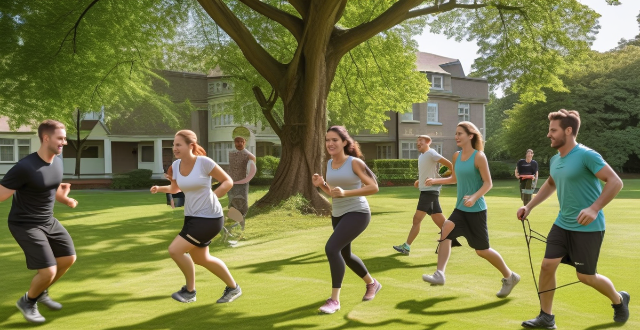
How can sports help improve the physical health of rural residents ?
Sports and physical activities can greatly improve the physical health of rural residents by enhancing fitness levels, managing weight, promoting mental well-being, encouraging social interactions, and preventing chronic diseases. It is crucial for local authorities and organizations to promote sports programs and provide accessible facilities to encourage more rural dwellers to engage in physical activities regularly.
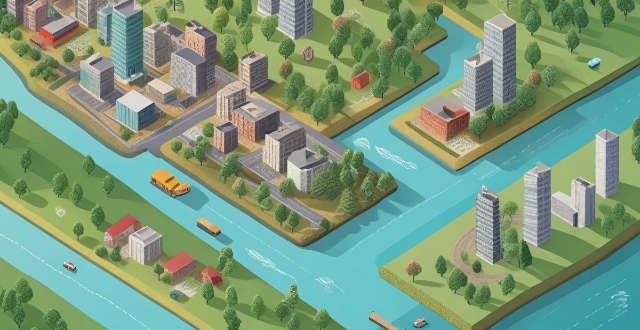
How do changes in precipitation patterns influence urban drainage and water management systems ?
Changes in precipitation patterns, often linked to climate change, have significant implications for urban drainage and water management systems. These alterations can lead to increased frequency and intensity of storm events, which places a strain on existing infrastructure and necessitates adaptation strategies. Key considerations include increased storm intensity and frequency, the urban heat island effect, runoff management, water quality concerns, and ecosystem impacts. Strategies for adaptation include green infrastructure, rainwater harvesting, decentralized water management, stormwater regulations, integrated water resource management, smart technology, community engagement, and sustainable drainage systems. The shifts in precipitation patterns demand a comprehensive approach to urban drainage and water management that emphasizes resiliency, sustainability, and adaptability. By integrating innovative technologies, green infrastructure, and community participation, cities can better cope with these changes and safeguard their environments and populations from the adverse effects of extreme weather events.

What role can local governments play in promoting sports and rural revitalization ?
Local governments can promote sports and rural revitalization by building sports facilities, offering affordable programs, supporting grassroots organizations, encouraging volunteerism, hosting sports events to attract tourism, and using sports marketing to support local businesses.
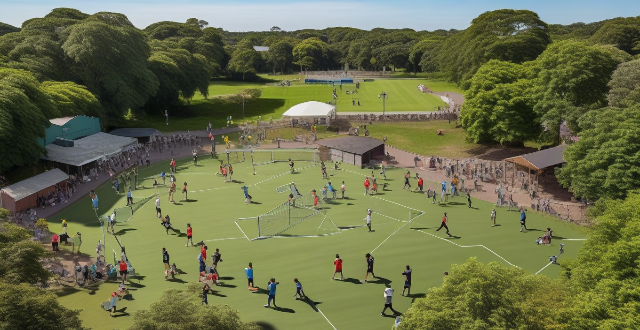
What impact does sports have on the social cohesion and community spirit in rural areas ?
The article discusses the impact of sports on social cohesion and community spirit in rural areas. Sports bring people together, promote teamwork, and create a sense of belonging that can strengthen the fabric of a community. The article explores how sports build social capital by forming friendships and encouraging civic engagement. It also highlights how sports promote teamwork and cooperation by teaching communication skills and collaboration towards a common goal. Finally, the article emphasizes how sports create a sense of belonging within a community by supporting local teams and participating in community events. Overall, sports have a significant impact on rural communities and contribute to their overall well-being.

What are the benefits of urban greening projects ?
Urban greening projects offer a multitude of benefits including improved air quality, climate regulation, water management, enhanced aesthetics and livability, mental and physical health improvements, community building, habitat creation and preservation, food production, job creation, energy conservation, and tourism attraction. These initiatives aim to increase the amount of greenery in cities, such as parks, gardens, green roofs, walls, street trees, and other forms of urban forestry. The advantages of urban greening are multifaceted and contribute significantly to the improvement of urban environments for both residents and wildlife.
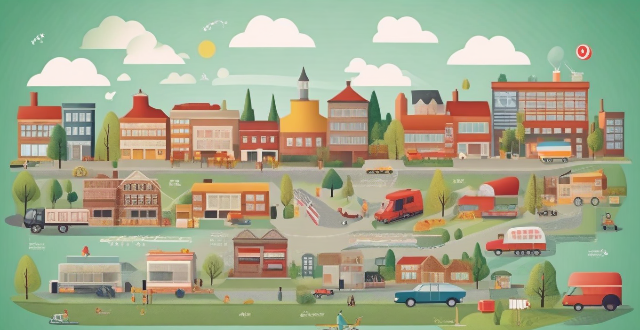
How can urban planning and design contribute to enhancing urban food security under changing climatic conditions ?
The text discusses the importance of urban planning and design in enhancing food security in cities, especially under changing climatic conditions. It outlines key strategies such as promoting urban agriculture, sustainable land use planning, improving access to healthy food options, supporting local food production and consumption, and fostering innovation and collaboration. These strategies aim to create resilient and self-sufficient urban environments that can adapt to climate change while ensuring food security for all residents.

What safety precautions should I take when cycling on urban routes ?
Cycling in urban areas can be a fun and efficient way to get around, but it's important to prioritize safety. Here are some key precautions to take when cycling on urban routes: 1. Wear a Helmet 2. Use Proper Lighting 3. Follow Traffic Laws 4. Be Predictable 5. Stay Alert 6. Choose the Right Route 7. Wear Reflective Clothing 8. Keep Your Bike Maintained
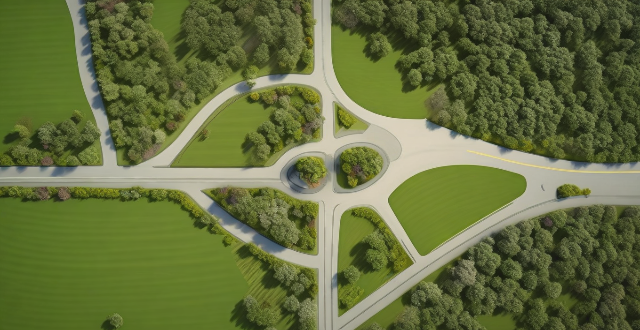
How can ecological protection areas be used as models for urban and peri-urban green spaces ?
Ecological protection areas serve as models for urban and peri-urban green spaces by emphasizing biodiversity, habitat preservation, and educational opportunities. Urban planners can apply EPA principles in designing green spaces that use native plants, natural landscapes, and green infrastructure to mimic ecological diversity. These areas should also promote biodiversity through wildlife corridors and nesting sites, engage communities with educational signage and programs, and foster partnerships with schools.
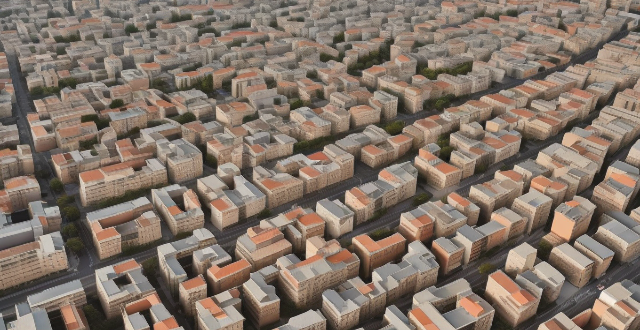
What are the top 10 cities for urban photography ?
The article provides a list of the top 10 cities for urban photography, each with its unique charm and photo opportunities. The cities include New York City, Tokyo, Paris, London, Hong Kong, Berlin, Istanbul, Chicago, Rio de Janeiro, and Melbourne. Each city is described in terms of its iconic landmarks, cultural diversity, natural beauty, historical contrasts, and architectural wonders. The article concludes that these cities offer a unique blend of urban elements that cater to various photography interests, making them ideal destinations for any urban photographer looking for their next great shot.
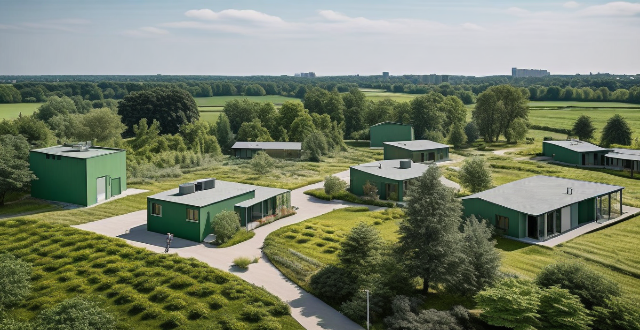
What are the economic benefits associated with urban green spaces ?
Urban green spaces provide economic benefits to cities, including increased property values, reduced air pollution, and enhanced tourism. These spaces improve the living environment, leading to higher home and rental prices, increased tax revenue, and healthcare cost savings. Additionally, they attract tourists, boosting the local economy through job creation and multiplier effects. Investing in urban green spaces is beneficial for both the environment and city prosperity.

How does urban vegetation impact air pollution levels ?
Urban vegetation, including trees, shrubs, and grasses in urban areas, plays a crucial role in mitigating air pollution. It improves air quality by reducing pollutants such as carbon dioxide (CO2), nitrogen oxides (NOx), and particulate matter (PM). Plants absorb CO2 from the atmosphere during photosynthesis, which helps to reduce the concentration of this primary greenhouse gas contributing to global warming. Trees also store carbon in their biomass, effectively removing it from the atmosphere through a process known as carbon sequestration. The large leaf surface area of urban vegetation helps to capture and reduce nitrogen oxides (NOx) in the air. When NOx comes into contact with plant leaves, it reacts with the stomata to form nitrates, which are then absorbed by the plant. Soil microorganisms play a vital role in breaking down organic matter and converting it into nutrients that plants can use. These microorganisms also help to reduce NOx levels by converting them into harmless compounds such as nitrogen gas. Urban vegetation can trap particulate matter (PM) through its leaves and bark, preventing it from being inhaled by humans and animals. This helps to reduce the health risks associated with PM exposure, such as respiratory problems and cardiovascular diseases. Trees act as wind breaks, reducing wind speed and preventing PM from becoming airborne, which helps to keep PM levels low in urban areas and improve overall air quality. In conclusion, promoting urban green spaces and encouraging the planting of more trees and shrubs in cities is essential to mitigate the negative effects of air pollution.
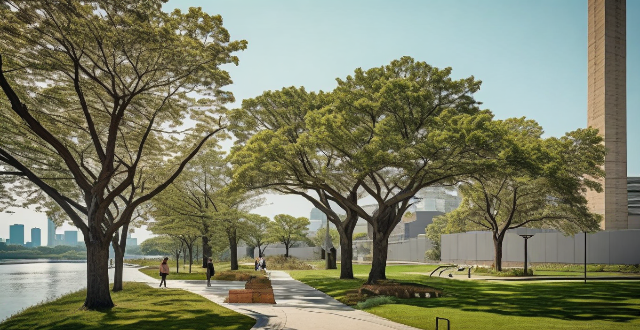
What is the importance of tree cover in urban areas ?
The text discusses the importance of tree cover in urban areas for environmental, social, and economic benefits. It highlights the role of trees in improving air quality, regulating climate, managing water, enhancing aesthetic value, building communities, reducing noise pollution, increasing property values, conserving energy, and attracting tourism. The text also suggests ways to promote tree cover in urban areas through planting initiatives, maintenance and protection, and education and awareness campaigns.

How do urban greening projects affect biodiversity in cities ?
Urban greening projects, which aim to increase the amount of vegetation within cities, can have significant effects on urban biodiversity. These projects typically involve planting trees, creating parks and green spaces, and restoring natural habitats. Here are some ways in which these initiatives can influence the variety of species living in urban areas: - Increased Habitat Availability: By adding more greenery, urban greening provides additional habitats for a wide range of organisms. This includes plants, insects, birds, and small mammals that can thrive in these newly created environments. - Mitigation of Urban Heat Islands: Vegetation helps reduce the urban heat island effect by providing shade and releasing water through transpiration, creating cooler microclimates that are more suitable for certain species. - Enhanced Food Sources: Flowering plants attract pollinators like bees and butterflies, supporting their populations and contributing to the health of the overall ecosystem. - Increased Water Quality and Availability: Green roofs and rain gardens help manage stormwater runoff, reducing pollution and providing water sources for urban wildlife. - Promotion of Biodiversity through Education and Awareness: Parks and green spaces serve as outdoor classrooms, offering opportunities for education about ecology and conservation. While urban greening projects offer numerous benefits for biodiversity, they also present challenges such as potential introduction of invasive species, maintenance requirements, and resource allocation trade-offs with other land uses.

What challenges do rural areas face when it comes to sports facilities and infrastructure ?
Rural areas face numerous challenges in providing sports facilities and infrastructure, including lack of funding, inadequate infrastructure, transportation issues, limited recreational opportunities, accessibility and inclusivity concerns, low community engagement and participation, and weather and environmental factors. To overcome these challenges, rural communities can partner with local organizations, seek government grants, promote community involvement, and explore innovative solutions like mobile sports units or temporary facilities.
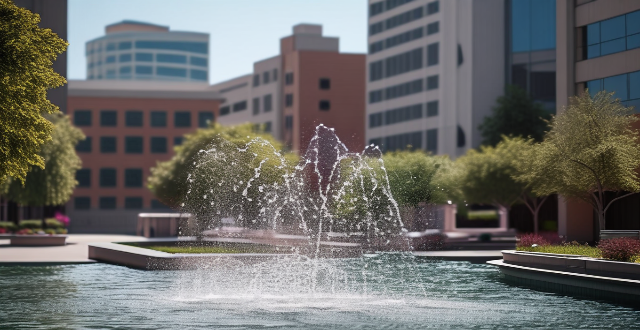
How can urban areas improve their water use efficiency and conservation efforts ?
Improving water use efficiency and conservation in urban areas requires a multifaceted approach involving technological innovations, infrastructure upgrades, public awareness campaigns, regulatory policies, and research initiatives. By implementing these strategies, urban areas can significantly reduce their overall water consumption while ensuring sustainable access to clean water for all residents.
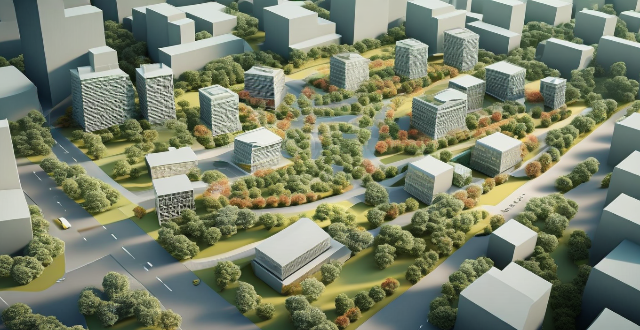
How can we prevent flooding in urban areas ?
Flooding in urban areas is a pressing issue that calls for multifaceted solutions. The strategies include enhancing infrastructure resilience through green infrastructure development, improved drainage systems, and structural flood protection measures. Risk management and early warning systems are also crucial, encompassing risk assessment, community participation, hydrological monitoring, weather forecasting technology, and public alert systems. Emergency response plans involving evacuation routes, temporary shelters, and rescue services coordination further strengthen the overall approach. A combination of structural and non-structural strategies is recommended for effective adaptation to rising flood risks. Urban planners, engineers, and policymakers must collaborate to create cities that are resilient, safe, and capable of handling climate change's uncertainties.

Can the promotion of sports activities help in reducing urban poverty ?
Promoting sports activities can contribute to reducing urban poverty by improving health, providing educational opportunities, promoting social cohesion, and creating economic opportunities. However, it is important to recognize that sports activities alone cannot solve all aspects of urban poverty and should be part of a broader strategy to address this complex issue.

What is the role of sports in enhancing urban social cohesion ?
Sports play a significant role in enhancing urban social cohesion by promoting community engagement, fostering a sense of belonging, and providing opportunities for individuals to come together and share common experiences. Sports events and activities provide a platform for residents to gather, interact, and participate in their local community, leading to increased social interaction, as well as a greater sense of ownership and pride in one's neighborhood. Sports teams and clubs can create a strong sense of identity and loyalty among their members, which extends beyond the playing field and into everyday life. Finally, sports provide numerous opportunities for individuals to come together and share common experiences, helping bridge divides between different groups within urban communities.

How can we encourage more people to participate in sports activities in rural areas ?
To encourage more people to participate in sports activities in rural areas, a comprehensive approach is needed that includes infrastructure development, education and awareness, community engagement, partnerships and sponsorships, and the use of technology and media. This involves building and maintaining sports facilities, promoting the benefits of physical activity through educational programs, forming local sports clubs and leagues, seeking sponsorships from businesses and government initiatives, and utilizing digital platforms and media coverage to increase visibility and interest in sports activities.
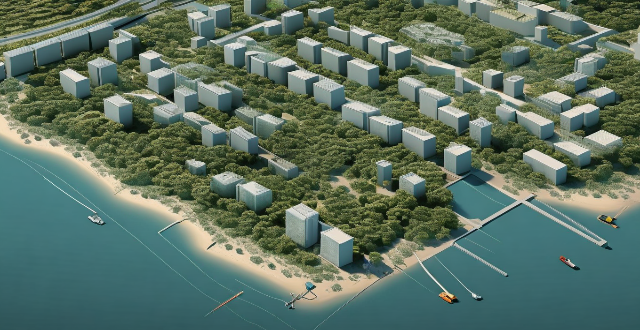
How can climate change impact urban planning ?
The article discusses the impact of climate change on urban planning, highlighting increased extreme weather events, sea level rise, urban heat islands, and energy efficiency as key challenges. It suggests measures such as elevated building standards, improved drainage systems, green infrastructure, coastal protection measures, sustainable water management practices, green roofs and walls, cool pavements, tree planting programs, energy-efficient building design, renewable energy sources, and efficient public transportation systems to mitigate these effects. The article emphasizes the importance of considering climate change in urban planning to create resilient cities and contribute to a sustainable future.